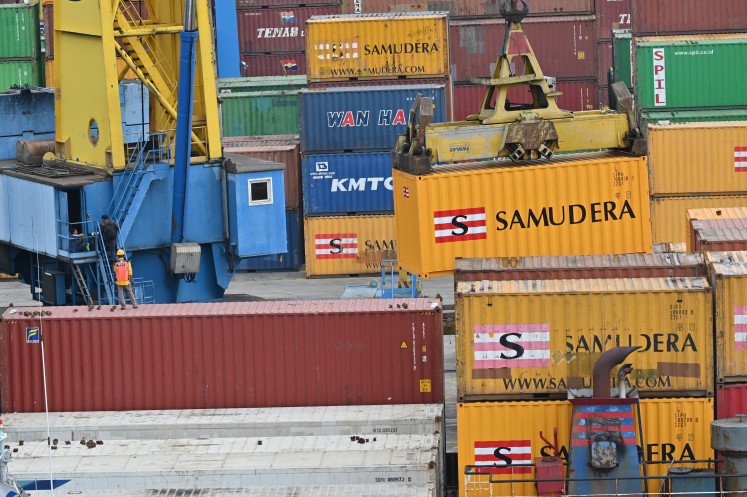WHO says 'policy coherence' key to tobacco control in RI
Indonesia needs interinstitutional policy coherence to effectively control tobacco consumption, the WHO says, citing the high smoking prevalence among the country's adult population.
Change text size
Gift Premium Articles
to Anyone

T
he World Health Organization (WHO) has recommended that Indonesia develop a more coherent policy framework to increase the effectiveness of its tobacco control measures, in light of the high prevalence of cigarette smoking among the population.
WHO Tobacco Free Initiative (TFI) program manager Vinayak Prasad said that Indonesia needed a whole-government approach to ensure that the measures were implemented, as did other countries that had some form of tobacco control in place but were seeing poor compliance.
“Indonesia is a good example where we need to create policy coherence among all stakeholders, not just the health ministry, to move the [tobacco control] policy,” Prasad said on Tuesday, during the launch of the WHO Report on the Global Tobacco Epidemic 2021.
Policy coherence would mean that countries would look at smoking prevalence through a multi-sectoral perspective that involved relevant stakeholders, Prasad added.
The WHO report assessed a country’s tobacco control measures across six areas, including tobacco consumption monitoring, tobacco advertising bans, graphic warnings on tobacco products and taxation policies to limit tobacco consumption.
Public discourse about the country’s tobacco control policy has often been framed around industry versus public health interests, with different state institutions representing each side. The Industry Ministry, for instance, seeks to boost tobacco production to improve the welfare of tobacco farmers, while the Health Ministry has long campaigned for stronger tobacco control.
Read also: Indonesia fails in tobacco control measures
The opposing interests came to a head in 2017, when the government decided at the last minute to sit down with lawmakers to deliberate a bill that aimed to increase domestic tobacco production. The bill has made little progress since then, and is currently on the House of Representatives’ long-term National Legislative Program (Prolegnas) for 2020-2024.
Indonesia is the only country in Asia and among the handful of countries worldwide that has not signed the WHO Framework Convention on Tobacco Control (FCTC).
The country also has the highest smoking prevalence compared to its Southeast Asian neighbors, with the WHO report finding that 33 percent of the adult population aged 15 and above were regular smokers in 2019.
Laos is just behind Indonesia regionally in terms of smoking prevalence, with 24 percent of its adult population smoking regularly, followed by East Timor (23 percent) and the Philippines (18 percent).
The report also found that smokers in Indonesia were likely to find it easier to smoke in public compared to its regional neighbors, considering the general lack of compliance with the ban on smoking in public places. Furthermore, the report highlighted the lack of specific regulations to ban tobacco advertising.
Tobacco products also remained easily accessible in the country as it lacked enforcement mechanisms to punish sellers that violated a government regulation restricting tobacco sales to adults aged 18 and above.
Program manager Nina Samidi from the National Commission on Tobacco Control (NCTC) said the situation had contributed to Indonesia’s high smoking prevalence.
“There are three reasons why a teenager or a child goes on to become a smoker: easy access to cigarettes, exposure to [tobacco] advertisements or promotions, and peer pressure from their environment,” Nina told The Jakarta Post on Tuesday.
Read also: Protect Indonesian children from tobacco addiction
According to the Health Ministry’s latest basic health survey (Riskesdas), which is conducted every five years, smoking prevalence has been rising among adolescents aged 10-18 years, from 7.2 percent in 2013 to 9.1 percent in 2018.
Nina said a complete ban on cigarette advertisements, promotions and sponsorships across all media was necessary to reduce the number of young smokers. She also called on the government to issue additional policies to make cigarettes less accessible, including regulations on tobacco tax and tobacco sales license.









